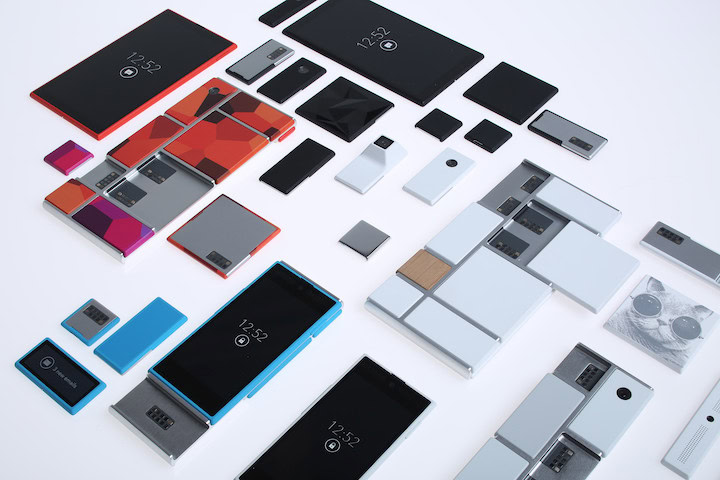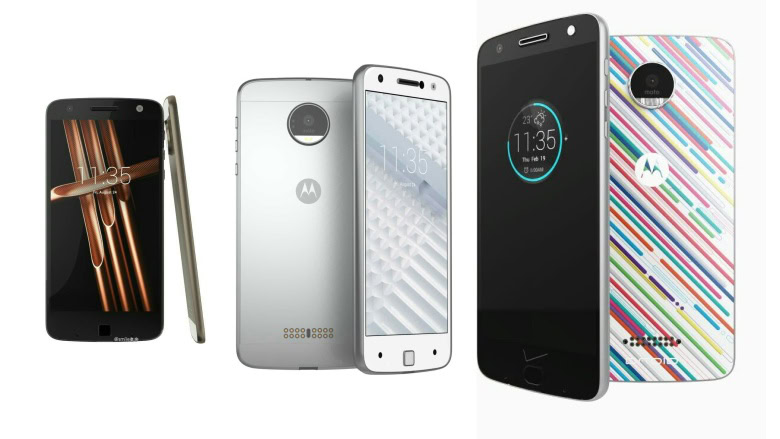Affiliate links on Android Authority may earn us a commission. Learn more.
Some of all parts: Are modular mobiles really the next big thing?

If you want to get an amusing rise out of anyone who has ever built a PC, tell them about the “brand new idea of modular design”. The reaction will probably be either one of irritation or feigned interest. Computer users have been swapping and switching parts for decades now, and indeed many product reviews even feature dedicated segments detailing the difficulties of opening up any given machine to access the RAM or SSD. Heck, even PC games have long since given birth to mods.
The idea of modular design as it applies to mobile phones on the other hand, is still a relatively new concept, if not one just now getting off the ground.Google’s Project Ara has been floating around and making waves for quite a fair bit of time, yet it hasn’t actually made it to market, be that Puerto Rico or any other. LG arguably has been first to the punch with its new G5 hardware, a device that, while promising, isn’t exactly taking the world by storm.
In this piece, we will look at the current incarnation of modular mobiles, examine what Motorola might be making in mere months, and then try to draw broader conclusions about the viability of such a concept as it extends to Google’s pending Project and the path to progress in and of itself.
Life is(n’t so) Good
The best place to start discussing modular design as it related to commercial smartphones is LG’s new G5. Putting aside crowdfunding ideas and whatnot, South Korea’s “other” big company is the first major OEM on the market with a smartphone that has swappable units to increase, extend, or alter functionality. Called “Friends”, we took a look at them here:
[related_videos align=”center” type=”custom” videos=”605767″]
Problems with the G5
Truth be told, there is an extremely limited number of LG’s Friends to play with. In the USA, the modular selection consists of…the LG CAM Plus. That’s it. All the others are external devices that connect to the G5 but which don’t actually integrate with the hardware design in any way. Some markets got a Bang & Olufsen audio DAC as well, but LG has opted to pass on the US, and even its own home of South Korea.
Suffice to say, the selection is a little slim, assuming the word “selection” is even suitable for such an occasion. While LG may deserve credit for actually bringing such an innovative product to market, as of yet there hasn’t been any other (read: third party) manufacturer who has put forth a modular component for the G5 hardware.
The actual implementation itself is somewhat questionable as well, given the device needs to literally be turned off to swap in a part. Why LG couldn’t have been bothered to include a trival internal battery that would last a minute or two while the main one is swapped out is a decision that only the Korean OEM itself can ultimately explain, but even so it’s something that doesn’t quite make sense from a usability standpoint.
Building burnt bridges
Report of the G5’s modular bay alignment being off center and leaving a gap have been mentioned by numerous reviews. Even if one manages to get a device that lines up properly, there is still a potential risk down the line of the button used to eject the piece itself breaking. And there are other quality control issues as well:
And this one:
And this unboxing video from Erica Griffin, one of the first to actually bring the problem front and center:
As this piece is not a review of the hardware, nor a referendum on LG’s quality control situation, perhaps it is best to simply make the point that these kinds of issues may very well be a major concern for modular smartphones on the whole. With existing hardware manufacturing methods, the components are always placed inside the device and basically stay there. But the second pieces start to come off or can be swapped, anything can start to happen.
Even when considering something as simple as a replaceable battery cover on the Samsung Galaxy S5, for example, it’s possible for the “teeth” to break off the plastic, or for the phone’s indentations (for the teeth) to get damaged and cause operation problems for the rear cover. At the very least, the G5 shows quite clearly just what kinds of trouble customers may have to, or are already, dealing with.
Motorola motions
Perhaps the next “real” jump into mainstream modularity could be with the new Moto X Moto Z devices. A report a few weeks ago by Venture Beats‘ Evan Blass revealed that Lenovo’s child company may be planning to unleash an entirely new design language into their stable:

In addition, Venture Beat also posted the following information related to the leak and the modular situation:
Motorola has at least six modules, called “Amps,” planned for launch, including a simple colored backplate that ships free with both handsets. The more interesting ones will be, of course, sold separately, both from Moto as well as third-party manufacturers. The first-party modules available at launch allegedly include stereo speakers; a battery pack; a camera grip with flash and optical zoom; a pico projector; and a rugged cover with wide angle lens attachment.
The end result actually has a lot of potential. The very idea that Motorola may potentially bring several accessories to market is, in and of itself, a sign that the company has arguably done its homework, and will take LG to task for the Korean conglomerate’s own questionable support. In fact, Venture Beat itself makes a hypothetical reference to such a situation, explaining that:
This modular system, and the one introduced by LG with the LG G5, are undoubtedly similar and will prompt comparisons in the press. And despite being first to market, LG is very likely going to come out on the losing end of these evaluations. Focusing so tightly on offering a removable battery seems to have hamstrung the Korean manufacturer into a form factor not nearly as well-suited for the task as Motorola’s.
Of course, Motorola’s plans are still just rumors. Until the unveiling of the new hardware – possibly in June – it’s extremely unlikely that any details about the Z will be put solidly spelled out by an official source.
Project Ara

Then of course there is Project Ara, which as mentioned, has yet to actually release to market. In some ways, a more fitting title might actually be “Projected Aura” given how cool everyone basically finds the concept, but with seemingly less solid evidence to confirm how well the real thing is. Indeed Google has several major hurdles to leap over in order to bring Ara to market: can it actually put forth and deliver on a product that is totally modular, while also making the components affordable and desirable, as well as ensuring that the overall product itself will actually find a receptive market in the first place?
Fittingly enough, while this piece was being written I/O 2016 was taking place, and saw some big doings in the Ara arena. The result: Google’s made yet another new promise to put out its endlessly delayed component-crazed handset later this year for developers (see the above picture) and then finally a formal, commercial release in 2017.
Of course, this is basically what was promised of Google Glass back in the day: a Developer Preview period followed by a commercial roll-out. And of course, Glass proved to be intrusive, expensive, and generally just not interesting enough for mainstream consumption as it was more or less scrapped. Sure Glass is still around in some way or another, but its implementation has been radically altered from the original intent.

In fact there’s almost a striking bit of irony to consider that Ara, which was arguably being marketed towards lower income consumers, is likely to not even register on their radar less they be of the type to follow sites like this. That Google will be producing Ara itself, as opposed to outsourcing to partner OEMs to do all the design and details, means the company is continuing to internalize hardware development, something seen with the Pixel C last year. Of course with seemingly new partners needed to produce these parts – as opposed to using OEMs with existing contracts and quality control “guarantees” – this means there is potentially even greater cause for concern with respect to potential defects.
Spotlight front and center
While Ara itself may be the real “start” of modular mobiles, there are still some issues which Google will need to address, either now or eventually: In the product that will ship this/next year, the SoC is built into the body of the phone itself and cannot be switched out. While some have argued that facilitating such a removable component would have made the task at hand significantly more difficult, it’s hard to see just how or why Ara itself will actually be different than any other product on the market: the CPU will still have a standard shelf life.
This problem becomes more concerning when one considers just what core specs Ara will actually have. If there is a model with the Qualcomm Snapdragon 820, then perhaps it’s future-proof for a bit. If there is a model – or just a single model – with a Snapdragon 600-series SoC however, then it’s already underpowered. And then there’s the possibility Google could pull a Galaxy Nexus by including a “lesser known” component that ultimately is discontinued and creates all new problems.
And what of costs? LG charges quite a bit for its Friends, will Ara’s components be priced similarly? Will Google actually bring out more advanced modules for the phone itself, of will Ara ultimately be just a basic smartphone and nothing more? At the very least there is a lot that can be done with the premise, but realization is another beast entirely.
Perhaps the larger issue however, is related to the G5’s build quality concerns, the likes of which were featured in the videos linked to earlier: How can Google ensure the hardware is made perfectly? What happens if the modular pieces are just ever so “off” and don’t fit properly? What if there is a defect with the frame itself? What if something happens with the mechanism(s) in play to attach the components? What happens if a customer damages the frame during use and it can no longer accept modules? This sounds like a real headache in particular if someone uses an Ara device for months then goes to swap out a piece, and notices the new one won’t fit inside because the slot is ever so slightly bent: Will returns or exchanges be honored?
While the G5, and potentially the Moto X/Z/whatever, will help elevate the modular mentality to the masses, Project Ara is very much a different proposition all together.
A noteworthy need…?
The final consideration is that of necessity. The purported purpose of modular components is to allow people to swap out different parts of their device for new or better ones down the line. Google has already established that the SoC for Ara will not be replaceable, which may already sour the premise for some.
Regarding costs however, one consideration to touch upon is that this business model doesn’t seem to recognize the dramatic rate of comoditization that has taken place in the mobile sector, ushered in no small part by the aggressive pricing strategies of Chinese OEMs such as HUAWEI, Xiaomi, OPPO, and OnePlus.
If a component retails for $50, but an entire device of similar or suitable quality may cost just $125 for a whole host of other upgrades, what reason does anyone have to buy a single module? Especially when said new offering may have a faster processor. And how many customers will actively seek to upgrade a modular product to begin with?
With LG, the only real offerings are a replaceable battery and camera grip. Useful? Depends on the person. Motorola’s alleged plans could have more meaning, but even so they are optional accessories. Google’s Ara is a full-fledged offering, but unless a customer were to buy a super super cheap base model, would there actually be a need for the casual consumer to spend money on any modular part they don’t explicitly see a need for?
That need is the key here: by and large the average consumer doesn’t know or care about specs. So how then, can companies expect to make money by selling spec-specific upgrades? Will Google spend millions in advertising to teach the general public what the various components in a smartphone do and why they should seek to swap out their existing ones?
By and large the average consumer doesn't know or care about specs. So how then, can companies expect to make money by selling spec-specific upgrades?
Again, it all boils down to who is being targeted here: The tech enthusiast who salivates at building a new PC from scratch, or an “unwitting” general consumer who thinks their brand new Galaxy S7 Edge smartphone is “a Google”.
Pricing Problems
The pricing issue also becomes relevant with respect to profit. As components become cheaper and cheaper, the ability to make a large profit becomes less and less profound. Should the modular components be sold at-cost, it would seemingly be of no value for major companies like Samsung or LG to even release or develop them.
This is another issue that might jeopardize the business model LG currently has: its modular Friends are quite expensive, and at the moment the lack of competition means only LG is currently offering them. If a group of third parties were to suddenly make the same things however, what need would there be for anyone to buy LG’s components? And if those components were sold without needing approval of itself, there isn’t even a prospective licensing fee to profit from.
Wrap Up
Modular design certainly has a specific set of appeal, and in many ways is a bridge to the far-flung science fiction fantasies people have long dreamed of with respect to their miniaturized mobiles. It’s easy to see how they could be conveniently retro-fitted for any particular purpose. Imagine if the phone could be tinkered and tailored to specific work styles and environments: it would suddenly make dedicated products – like the Galaxy S7 Active – less appealing. Users could just buy one, and alter its appearance and/or functionality for a specific event or situation.
It remains to be seen just what ultimately comes of all this however. While there are obviously some who love the LG G5, many find it to be a questionable product. Nothing is yet official about Motorola’s new X/Z smartphones, and even Google’s Project Ara is still quite a bit off.